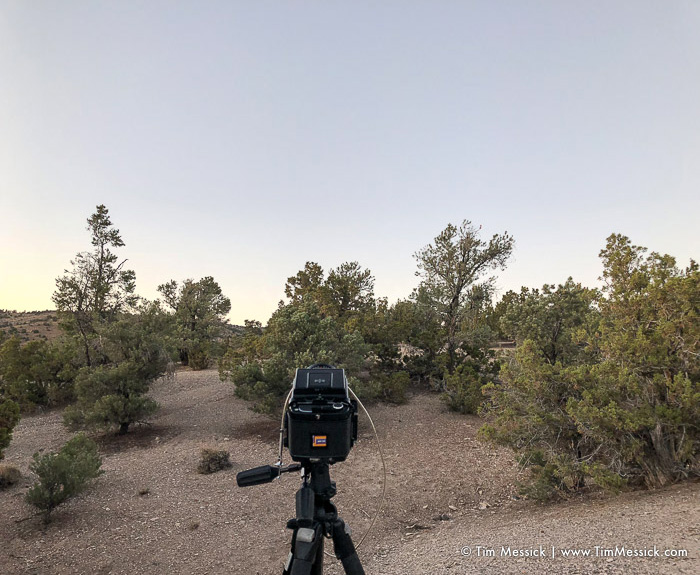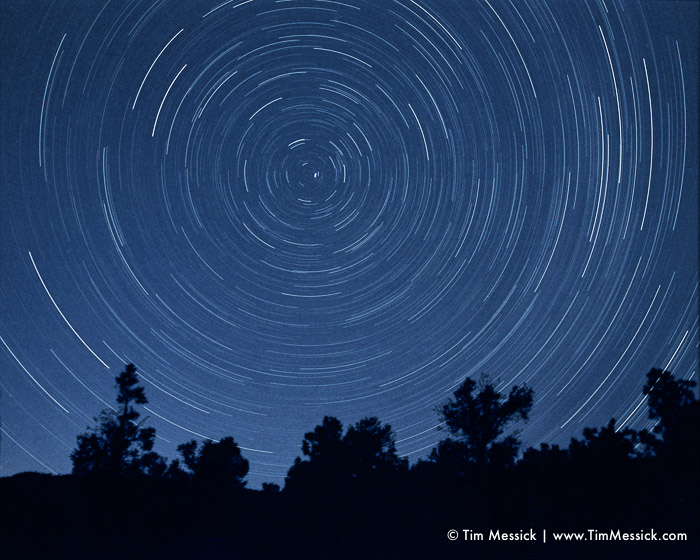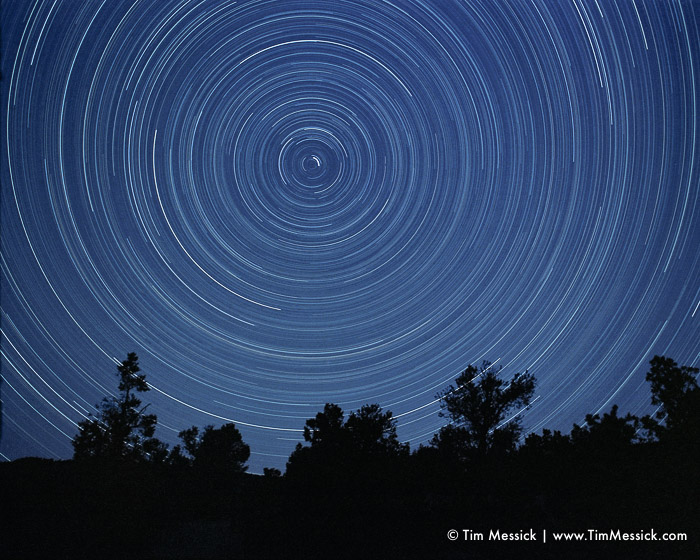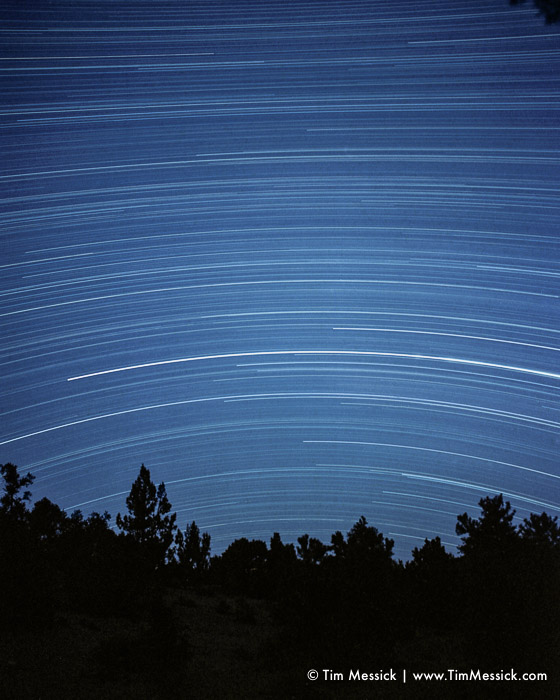
The RB-67 is loaded, focused, and waiting for nightfall.
It seems like everyone is shooting star trails these days, by stacking lots and lots of several-minute digital exposures. It’s easy. I do it too. It’s very cool, very technical, and the results can be really beautiful. But there’s a lot of waiting around in the cold, hoping the sensor doesn’t overheat and the batteries don’t quit. Then in post-processing there’s a lot of fussing over noise, hot pixels, blending modes, and those annoying little gaps where the star trail segments meet.
Then there is film. You open the shutter, go to bed, set the alarm for sometime pre-dawn, get up and close the shutter, take a leak, and go back to bed. You still have to scan the negative, remove a lot of micro-dust spots, and adjust the exposure, contrast, and color. There are trade-offs, but I rather like this “analog” alternative. And while the film is exposing, you can pop off some 20-second, super-high ISO images of the Milky Way with the digital thing.
While I was camping at Berlin-Ichthyosaur State Park on a recent moonless night, deep in the outback of Nevada, I made a few very-long exposures on film. The images below are 2, 6, and 8 hours long, on Kodak Portra 800, using a Mamiya RB-67 (which I’ve had since high school) with a 50 mm lens at f/5.6.

2 hours, looking north.

6 hours, looking north. I like this one best.

8 hours, looking south. Impressive, but not as interesting.
That brightest trail is Mars.
Copyright © 2018 Tim Messick. All rights reserved.
See also Tim Messick Photography and the Bodie Hills Plants blog.